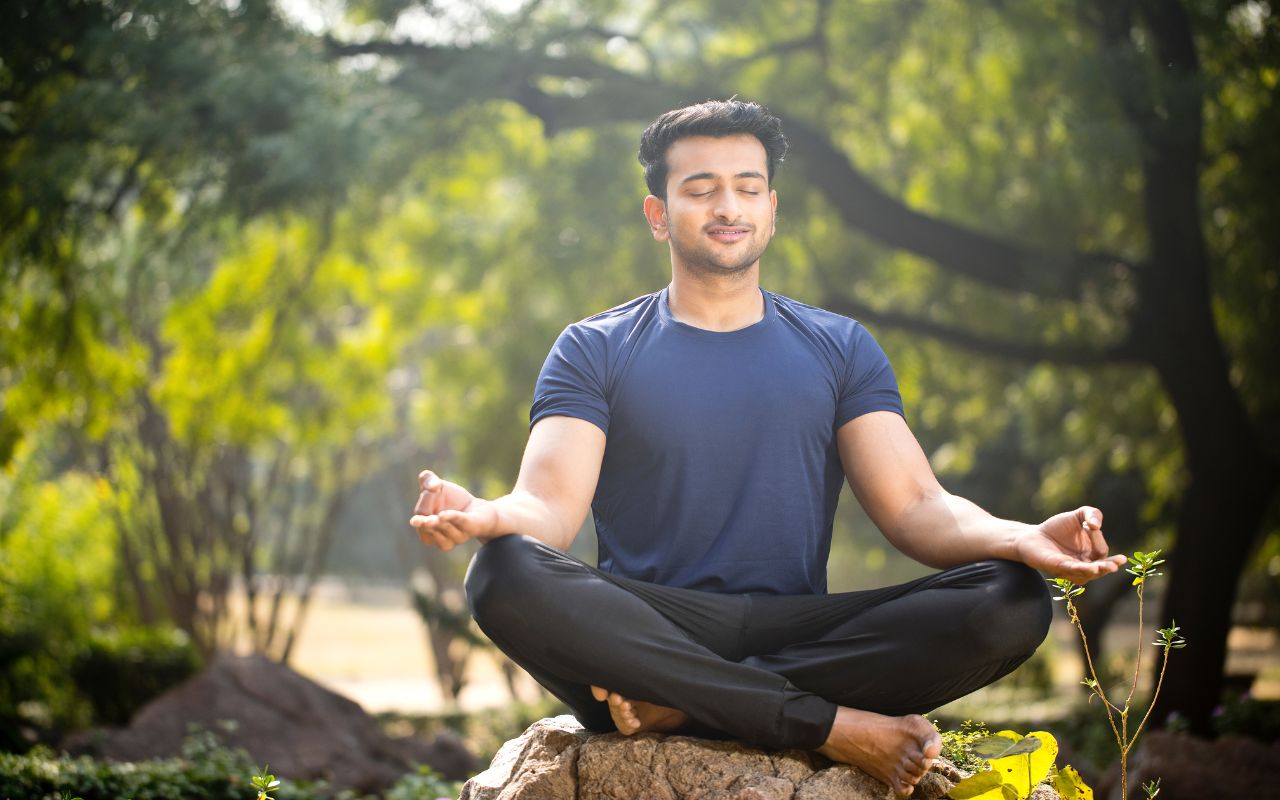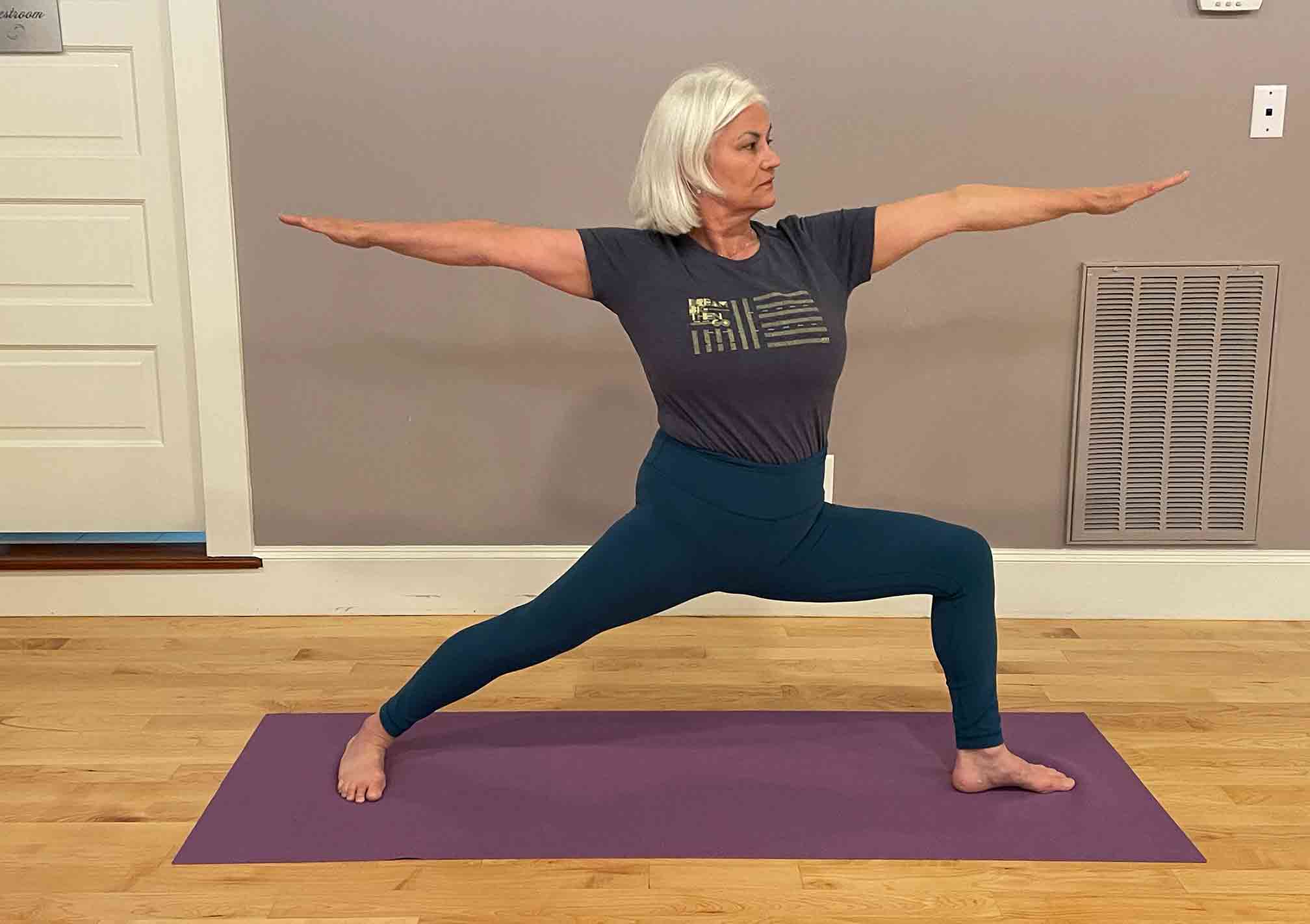
Pauline Schloesser, Ph.D., Certified Iyengar Yoga Teacher, IAYT Yoga Therapist
Although traditional yoga texts mention seated āsanas like Padmāsana, Siddhāsana, Bhadrāsana, and Vīrāsana for prāṇāyāma, B.K.S Iyengar discovered through his practice that supine asanas could also be used. Here are five types of Śavāsana that are given by the Iyengars for prāṇāyāma.
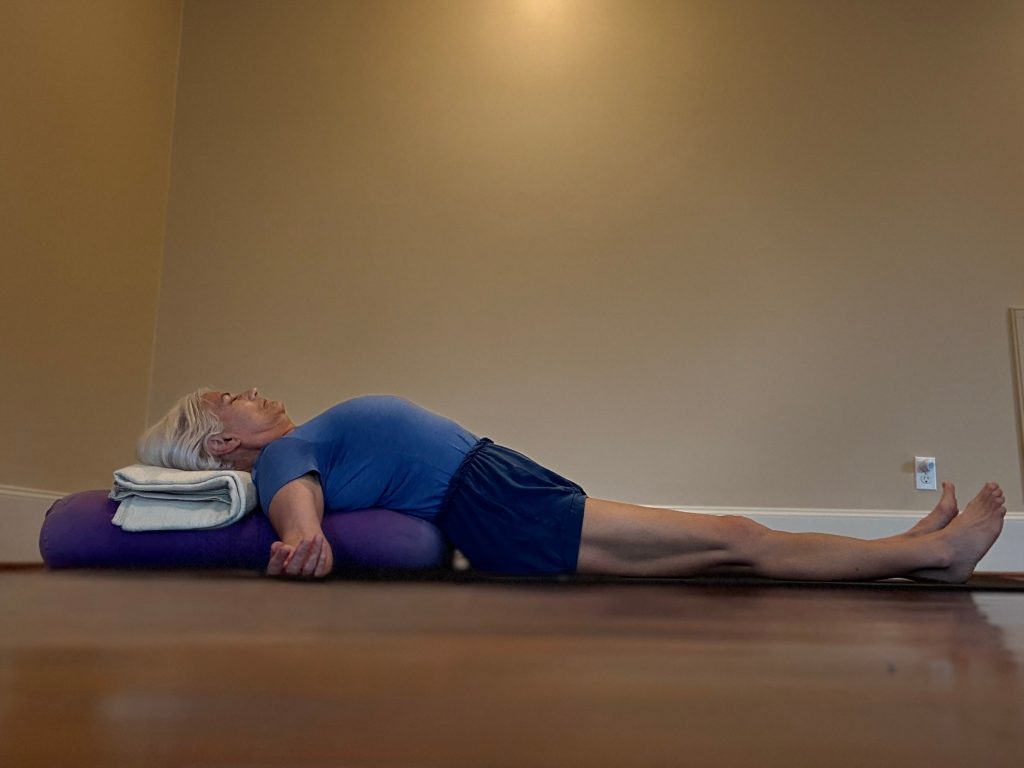
Spine-wise bolster with head support:
this support creates an open and spread chest with with the abdomen descending toward legs. The spine, though not erect is extended and the head and neck approximate jalandhara bandha (chin lock).
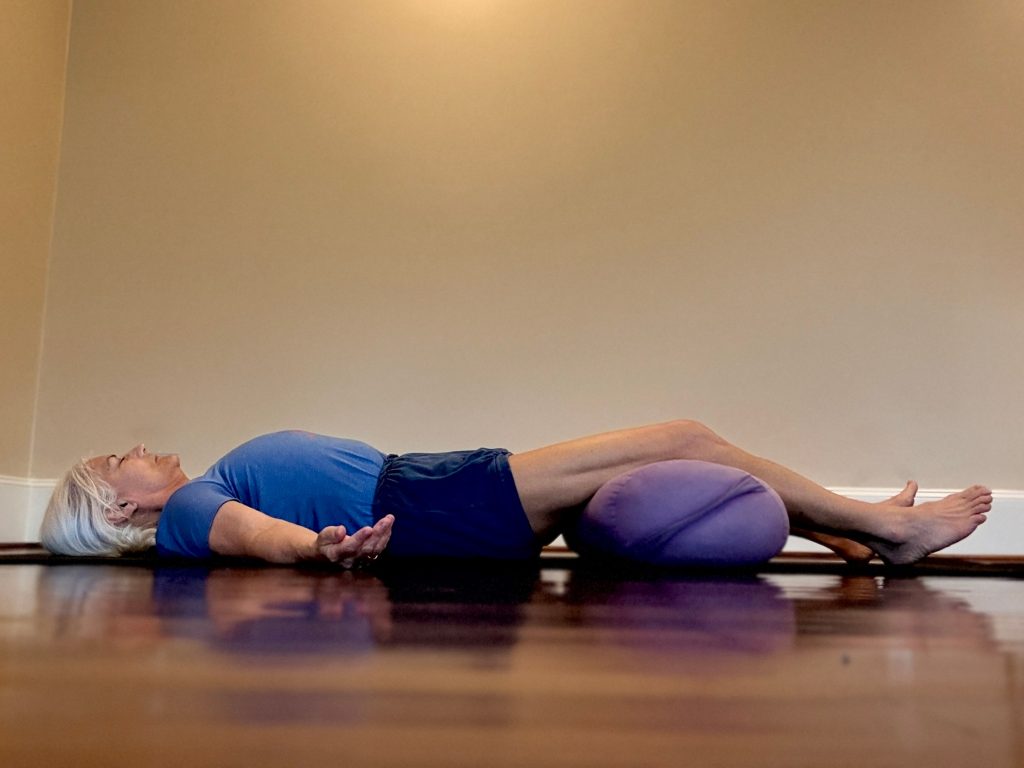
Bolster under thighs:
With knees bent and thighs resting on the bolster, the abdomen recedes toward the floor and the lower back lengthens. This facilitates uḍḍīyana kriyā or the deflation and flying-up action of the organs toward the head, an absolute requirement for prāṇāyāma.
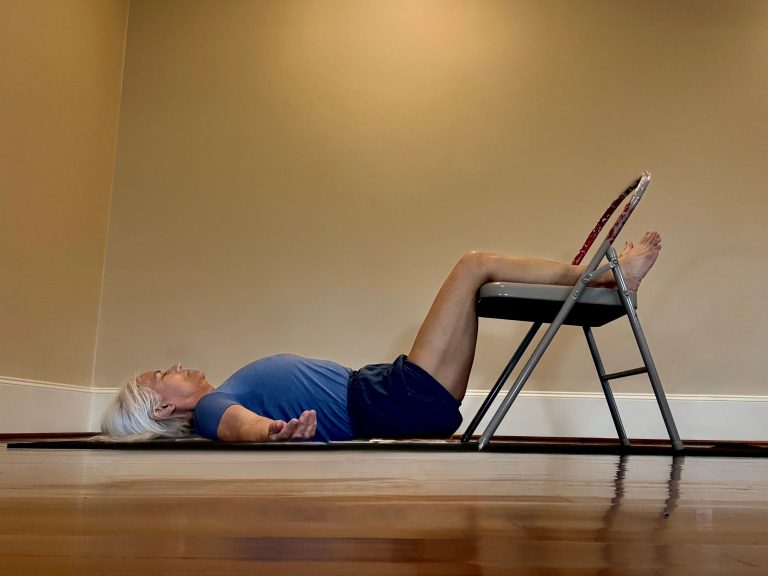
Calves on chair:
This is like the previous variation but with more lengthening of the lower back. Promotes awareness of the pelvic diaphragm, also activated in Uḍḍīyana kriyā.
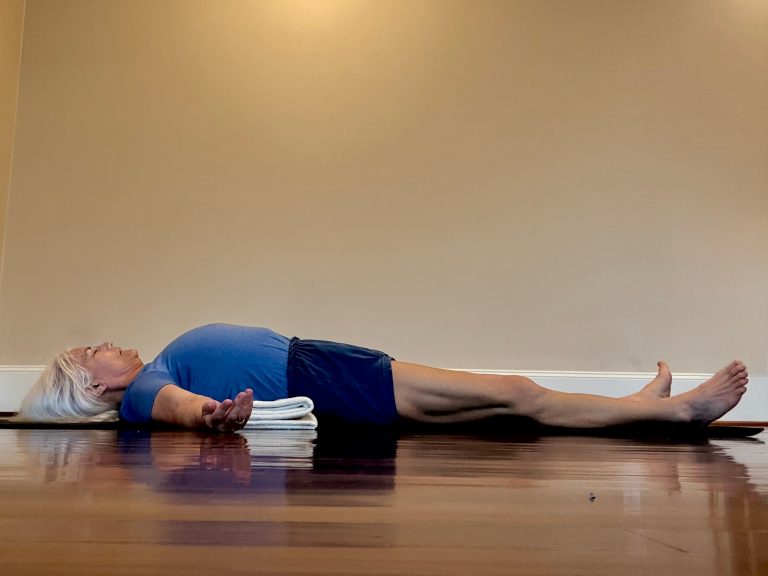
Support under waist / lumbar spine:
A rolled blanket under the waist creates an enhanced separation between abdomen and thoracic cavity, for more breath awareness in each of those parts.
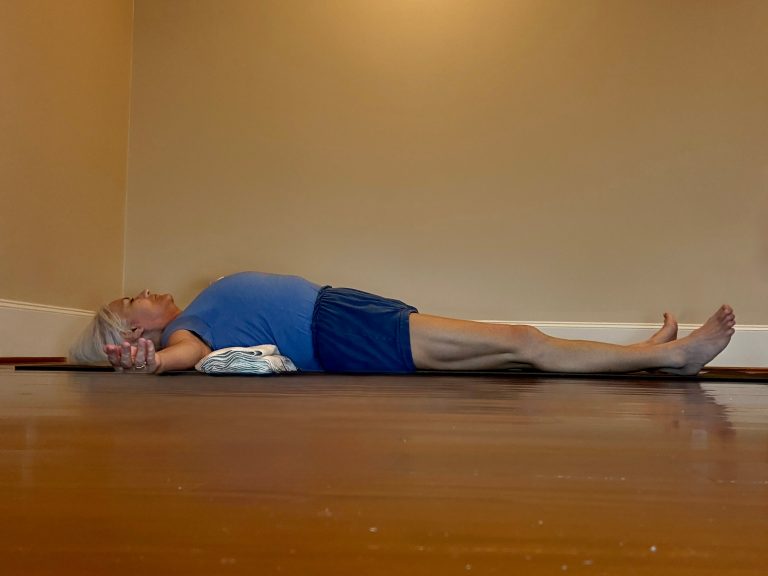
Support under dorsal spine and shoulder blades
Creates a spreading and lifting of the chest. It highlights the breath in the chest area.
Please note, although 5 Śavāsanas are presented here for prāṇāyāma, there are many more variations not shown. One will have a different experience by changing arms positions. Also other supine asanas like Supta Baddha Koṇāsana, Vīrāsana, Svastikāsana, and Matsyasana are also suitable for prāṇāyāma provided the practioner can do them without strain. Any āsana that can be held for 10 minutes lends itself toward the process of prāṇāyāma. The essential conditions is that the body must be set so that muscles, bones, and nerves become quietened.
If you’ve been taking yoga for a year or more, you are ready for this next step. Intermediate level students of all ages are welcome to join the new online series. If you haven’t been practicing yoga in the last year, we hope you’ll join a beginners’ series or the ageless class.

